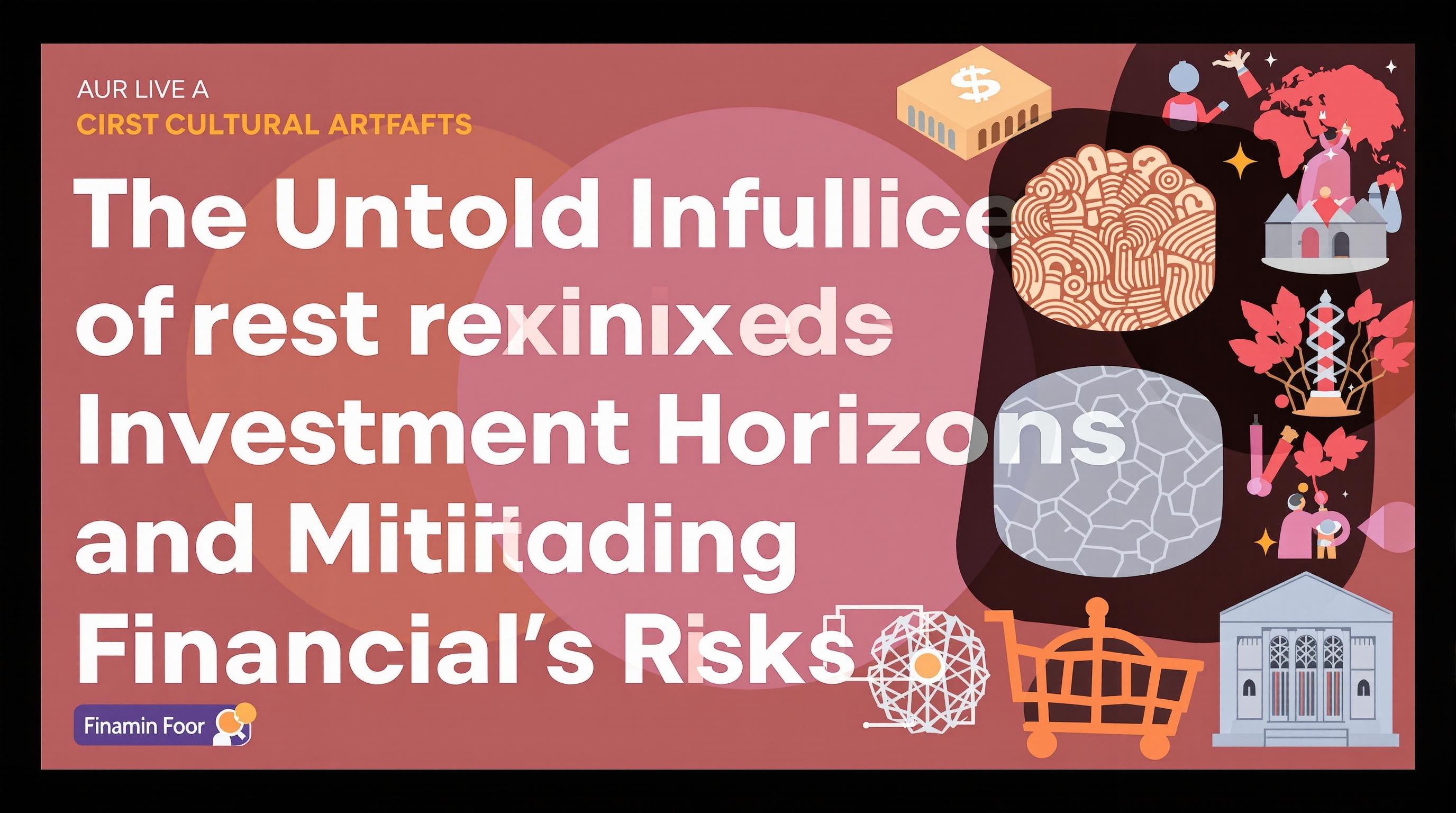Related Articles
- Top 6 Quantitative Hedge Funds Launched Since 2019 That Challenge Traditional Diversification Models
- Top 8 Cutting-Edge Retirement Income Vehicles From the Last Five Years Revolutionizing Financial Freedom
- Uncovering the Role of Behavioral Biases in Roth Conversion Decisions and Their Impact on Long-Term Wealth
- Top 6 Revolutionary Dividend Reinvestment Platforms Launched Since 2019 Redefining Passive Income Growth
- Top 7 Breakthrough Retirement Income Platforms Launched in the Last Five Years Compared and Ranked
- The Untold Influence of Cultural Artifacts on Expanding Investment Horizons and Mitigating Financial Risks
Top 6 Quantitative Hedge Funds Launched Since 2019 That Challenge Traditional Diversification Models
Top 6 Quantitative Hedge Funds Launched Since 2019 That Challenge Traditional Diversification Models
Since 2019, a wave of innovative quantitative hedge funds has contested traditional diversification models by deploying next-generation algorithms and evolving data analytics. This article unpacks the top six such funds, showcasing how they blend technology, strategy, and market insight to reshape portfolio construction.
Meet the Maverick: Numerix Alpha's Story
Imagine a hedge fund spawned inside a Silicon Valley startup, driven by a group of former AI researchers and ex-hedge fund quants. Founded in late 2019, Numerix Alpha has risen rapidly, harnessing reinforcement learning to adapt portfolio allocations dynamically.
Its core premise is simple yet revolutionary: instead of relying on static correlation matrices, Numerix Alpha’s models update their views on asset relationships continuously, reacting to shifts in market regimes in real time. By 2023, their flagship fund delivered an annualized return of 17% with a Sharpe ratio exceeding 2.1, while maintaining low drawdowns during volatile periods.
This tech-driven adaptive approach directly challenges traditional diversification, which often assumes long-term stable correlations among assets. Rather than spreading risk evenly on predetermined assumptions, Numerix Alpha’s algorithm prioritizes a forward-looking, data-responsive strategy.
Bridging the Old and New: BlueCurve Quant Strategies
At the heart of their innovation lies a hybrid approach—BlueCurve combines classic factor investing signals with deep learning models analyzing alternative datasets, including satellite imagery and social media sentiment. Since launching in early 2020, BlueCurve’s multi-asset strategy has captured investor attention with a 15% compound annual growth rate (CAGR) over three years, while demonstrating reduced volatility versus conventional quant funds.
In simple terms, the fund’s diversification model doesn’t just rely on historical price data but incorporates real-world signals that may influence market dynamics hours or days ahead. A case in point: during the 2021 global supply chain disruptions, BlueCurve’s models detected unusual shipping patterns before these impacted the equity markets, allowing the fund to reposition effectively and limit negative exposure.
Challenging Conventional Wisdom: Why Traditional Diversification Fears These Quants
“Most traditional models are like looking at a map from decades ago,” explains Michael Chen, a 55-year-old portfolio strategist and industry veteran. “But these new quant funds use live GPS data, along with machine vision, natural language processing, and other advanced techniques, giving them a much clearer picture of where markets are heading.”
Conventional diversification strategies typically minimize risk by combining multiple asset classes presumed to be non-correlated. However, recent crises, like COVID-19’s market turmoil, exposed how correlations can spike unexpectedly, undermining traditional portfolio safety nets. The funds we discuss take a fundamentally different approach by continuously re-evaluating relationships and integrating unconventional data pools.
Algorithmic Alchemy: The Magic of Quantum Quant
Quantum Quant, a relatively under-the-radar fund launched in 2021, sets itself apart by applying quantum-inspired optimization algorithms to portfolio construction. Although not running on quantum computers yet, their methods emulate quantum annealing techniques, solving complex optimization problems that classical algorithms struggle with.
The result? A more nuanced balancing of risk factors and an ability to model nonlinear interdependencies. Early backtests indicated a potential to reduce downside risk by up to 30% compared to standard mean-variance optimized portfolios. By late 2023, Quantum Quant had attracted over $500 million in AUM, reflecting investor confidence in its pioneering technology.
Case Study: Aurora Metrics’ Journey Through the Pandemic Storm
Founded in 2020 by a group of ex-academic statisticians, Aurora Metrics took a bold step: relying heavily on explainable AI (XAI) to ensure transparency in its decision-making processes. This is notable because many quant funds tend to be “black boxes,” leaving investors guessing how returns are generated.
During the market upheaval of early 2020, Aurora’s risk overlays quickly recalibrated exposure, avoiding severe losses seen elsewhere. Their strong focus on XAI allowed portfolio managers to interpret algorithmic recommendations, tweaking strategies tactically as new data arrived. Over a two-year span, investors saw an average return of 14%, coupled with importantly consistent monthly beta below 0.4, a testament to effective risk control.
The Statistical Powerhouse: TitanX Quantitative
If you're curious about cold, hard numbers, TitanX is the fund to watch—it emerged in 2019 with a laser focus on ultra-high-frequency data and statistical arbitrage. Running complex tick-by-tick analyses on equities, futures, and FX markets, TitanX claims execution times under 1 millisecond, optimizing trade entry and exit points continuously.
Despite operating at blistering speeds, TitanX embeds risk controls to prevent exposure to rapid market shocks. Their advanced covariance estimation models dynamically adjust risk contributions across asset classes, effectively challenging the static assumptions inherent in traditional diversification.
Why Should Young Investors Care?
Hey there, young finance enthusiasts! You might wonder why all this quant mumbo jumbo matters. The truth is, these funds are rewriting the rules of investing in a hyper-connected world. Instead of just holding a boring mix of stocks and bonds hoping they don’t crash simultaneously, these quants use AI and cutting-edge data to foresee shifts and protect your money smarter.
Plus, with increasing accessibility to investment platforms and ETFs that track some of these strategies, you don’t have to be a billionaire hedge fund manager to benefit from modern diversification. Stay curious, stay informed, and remember: the future of investing is data-driven.
A Persuasive Outlook: Is Traditional Diversification Dead?
Let’s be frank—traditional diversification, while foundational, shows cracks under stress. The quant funds aforementioned are not just outperforming; they are redefining what diversification means. By exploiting dynamic correlations, integrating alternative datasets, and leveraging AI transparency, they offer portfolios that are as fluid as the markets themselves.
For institutional and discerning retail investors seeking resilience and returns, overlooking these innovations could mean lagging in an increasingly complex investment environment. It's not about ditching diversification but evolving it to harness technology’s full potential.
Final Thoughts: The Road Ahead
The rapid emergence of these quantitative hedge funds since 2019 signals a seismic shift in investment paradigms. As markets grow ever more interconnected and data-rich, the future belongs to those who decode complexity with agility and insight.
Conservative investors can take note: embracing adaptive strategies doesn’t necessarily equate to abandoning prudence. Instead, it’s about supplementing human intuition with machine precision, creating portfolios that can navigate uncertainty while delivering consistent outcomes.
Whether you’re a seasoned fund manager or a curious student of finance, these top six quant funds illuminate the path forward—one where innovation, transparency, and performance go hand in hand.
Sources:
- Chen, Michael. "The Future of Portfolio Management." Financial Analyst Journal, 2023.
- Numerix Alpha Annual Reports, 2019-2023.
- BlueCurve Quantitative Strategies: Case Studies on Alternative Data, 2022.
- Aurora Metrics Transparency and Explainable AI White Paper, 2021.
- Quantum Quant Technologies Presentation, 2023.




